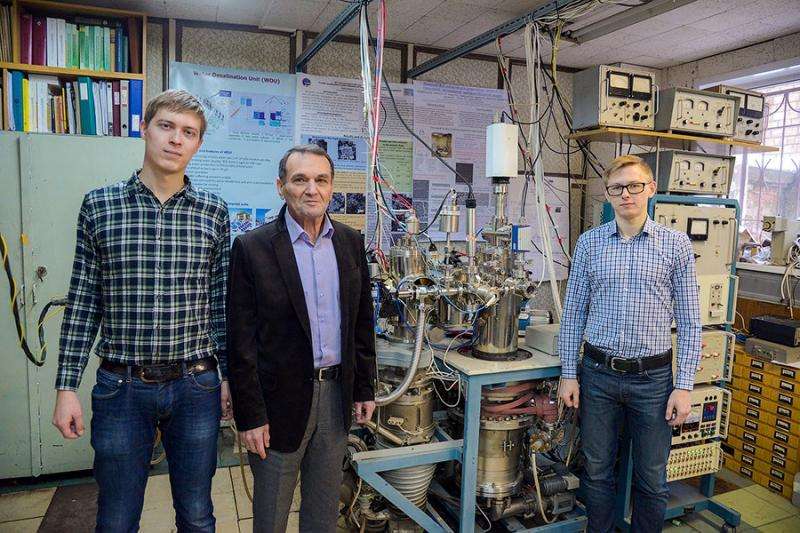Scientists 'teach' hydrogen to penetrate in metal surfaces through oxidate layers

Oxidate layers on metal surfaces are a barrier for hydrogen penetration in and out of metal. In experiments conducted at the Plasma Physics Department at MEPhI , it has been shown that hydrogen penetration through oxidate layers can be manipulated through radiation of surface oxide by atomic and ion flows. In particular, hydrogen penetration through the surface and its capture by metals accelerates under the radiation of the oxidate surface by hydrogen atoms or hydrogen plasma with thermal velocity. If a surface radiating ion or atomic flow has an oxygen admixture, hydrogen removal from metal takes place. This phenomenon has been called "radiation enhanced penetration" (REP).
Experiments conducted over three years at the department have detected these phenomena and revealed regularities of their manifestations in multiple cases (various metals, oxide layers, contents and radiation regimes).
Determination and explanation of this phenomenon are important, because they can help improve the work of many devices and facilities. For example, so-called neutron tubes serve for generation of neutron flows. One of the main tube's elements is a thin titanium layer loaded with hydrogen isotopes. The higher the concentration of hydrogen isotopes in the titanium layer, the larger the flow of neutrons produced by the tubes and the tube time of work (its source). The understanding of the phenomenon minimize losses of hydrogen isotopes from the titanium layer and thus enhance the productivity and the tube's operational life.
In atomic reactors like WWER, zirconium coatings of fuel elements with an oxide layer on the surface prevent the contact of hydrogen from the water coolant with the uranium-bearing material of the fuel element. The fuel element operational life is limited by the fact that during the interaction of the reactor's active zone with water, hydrogen ions and hydrogen-containing radicals in water cause the erosion of zirconium coverings. Their integrity is broken and barrier properties are lost in relation to the hydrogen diffusion. Oxide layers on the fuel element's surface significantly decelerates degradation and hydrogen penetration.
The vacuum chamber walls of the International Thermonuclear Experimental Reactor (ITER) and its components, which are in contact with plasma and metal dust produced in the process of its work, will absorb tritium. As the result, the reactor might soon become so radioactive, that its future use might be impossible. The results of the research show what the plasma contents should be like in order to prevent tritium accumulation in materials from contacting plasma, and thus make the reactor safe.
Provided by National Research Nuclear University




















